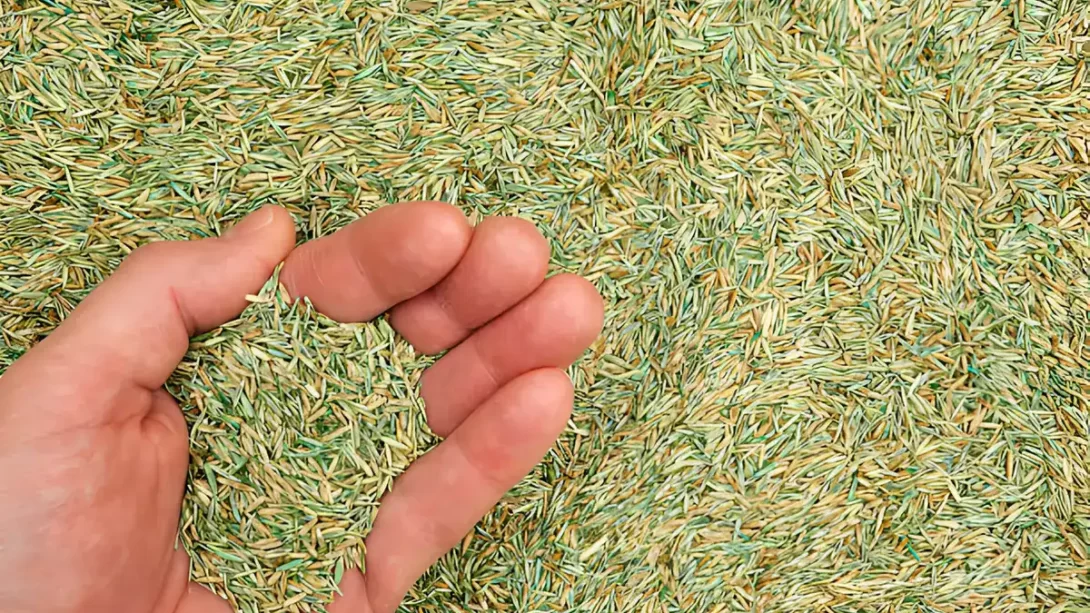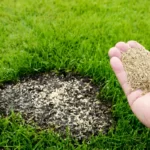Proper storage of grass seed is crucial for maintaining its viability and ensuring a lush, healthy lawn. Whether you’re a homeowner with a small garden or a professional landscaper, understanding how to store grass seed effectively can save time and resources. This article will delve into the essential aspects of grass seed storage, covering environmental factors that affect seed longevity and practical methods to preserve seed viability.
Grass Seed Storage
Grass seed viability is influenced by several key factors:
- Temperature and Humidity: Grass seeds store best in cool, dry conditions. High humidity and temperature can lead to reduced germination rates and increased risk of fungal diseases.
- Shelf Life: Under ideal storage conditions, grass seed typically remains viable for 2-3 years. However, this can vary based on seed type and storage environment.
- Impact of Aging: Over time, even well-stored seed will gradually lose its germination rate. It’s important to use fresher seeds for best results.
Preparing Grass Seed for Storage
Proper preparation of grass seed before storage is crucial:
- Inspection and Cleaning: Check the seeds for any signs of mold or pest damage. Remove any debris or chaff that may be mixed with the seeds, as this can harbor moisture and pests.
- Drying Seeds: If the seeds are not completely dry, spread them out in a thin layer and allow them to air-dry away from direct sunlight. Ensure they are thoroughly dry to avoid mold growth during storage.
Choosing the Right Storage Container
Selecting an appropriate container is vital for preserving the quality of the grass seed:
- Airtight Containers: Plastic or metal containers with airtight lids are ideal for keeping moisture and pests out. Ensure the container is dry and clean before adding seeds.
- Cloth Bags: Breathable cloth bags can be used for short-term storage or if regular seed usage is anticipated. However, they offer less protection against moisture and pests.
- Labeling: Clearly label each container with the seed type and date of purchase or packaging. This helps in tracking the age and viability of the seed over time.
Ideal Storage Conditions
Creating the right environment for storing grass seed is essential:
- Temperature and Humidity Control: Store seeds in a cool, dry place. Basements, cellars, or climate-controlled rooms are ideal. Avoid areas like sheds or garages where temperature and humidity can fluctuate.
- Protection from Sunlight: Keep seeds away from direct sunlight, as UV rays can degrade the quality over time.
- Avoiding Extreme Conditions: Extreme cold or heat can damage seeds. Maintain a consistent, moderate temperature for optimal storage.
Managing Moisture and Pests
Maintaining the right conditions inside the storage container is crucial for preserving grass seed:
- Moisture Control: To prevent moisture buildup, which can lead to mold and mildew, use silica gel packets or similar desiccants in the storage container. Ensure that the container is sealed tightly after each use.
- Pest Deterrence: Store the seed in a rodent-proof container, especially if storing in areas like garages or sheds. Regularly inspect the storage area for signs of pests and use natural deterrents or traps if necessary.
- Regular Inspection: Periodically check the condition of the stored seeds. Look for signs of moisture, mold, or pest infestation and take immediate action if any issues are detected.
Long-Term vs. Short-Term Storage
The approach to storing grass seed may vary depending on how long you plan to store it:
- Long-Term Storage: For storage exceeding a year, use airtight containers and store in consistently cool and dry locations. Regularly check the seed’s condition and be more vigilant about moisture and pest control.
- Short-Term Storage: If you plan to use the seed within a few months, simpler methods like cloth bags or regular plastic containers can suffice. However, ensure that the storage area remains dry and relatively cool.
Checking Seed Viability Before Use
Before planting, it’s important to test the seed’s viability:
- Germination Test: Conduct a simple test by placing a sample of seeds on a moist paper towel. Cover the seeds with another moist towel and place them in a plastic bag. Keep the bag in a warm area and check for germination after about a week.
- Interpreting Results: A high germination rate indicates that the seeds are still viable. If only a few seeds sprout, it may be best to purchase new seed for optimal lawn growth.
- Discarding Old Seed: If the seeds don’t germinate, they should be discarded. Using non-viable seeds can result in patchy lawn growth and wasted effort.
Conclusion
Storing grass seed properly is a key factor in ensuring its viability and effectiveness for future lawn projects. By following the outlined best practices, you can significantly extend the shelf life of your grass seed. Here’s a recap of the essential points:
- Proper Preparation: Always start with clean, dry seeds and remove any debris to prevent mold and pests.
- Appropriate Containers: Use airtight containers for long-term storage and breathable ones for short-term. Regardless of the duration, label your containers clearly with the seed type and storage date.
- Optimal Storage Conditions: Keep the seeds in a cool, dry place, away from direct sunlight and extreme temperature fluctuations. Basements or climate-controlled rooms are ideal.
- Moisture and Pest Management: Regularly check for moisture and pests. Using desiccants and pest deterrents can help maintain the quality of the seeds.
- Viability Testing: Before planting, conduct a germination test to ensure the seeds are still viable. This step can save time and resources by avoiding the use of ineffective seeds.
- Adaptability: Keep in mind that storage needs can vary based on your geographical location, the type of grass seed, and how soon you plan to use it. Be flexible and adjust your storage methods as needed.
By adhering to these guidelines, you can successfully store grass seed and maintain its germination rate, ensuring that when the time comes to sow, your seeds are as ready and robust as the day they were purchased. Regularly reassessing your storage approach and staying vigilant about changing conditions will help you achieve the best results in your lawn care and gardening endeavors.



